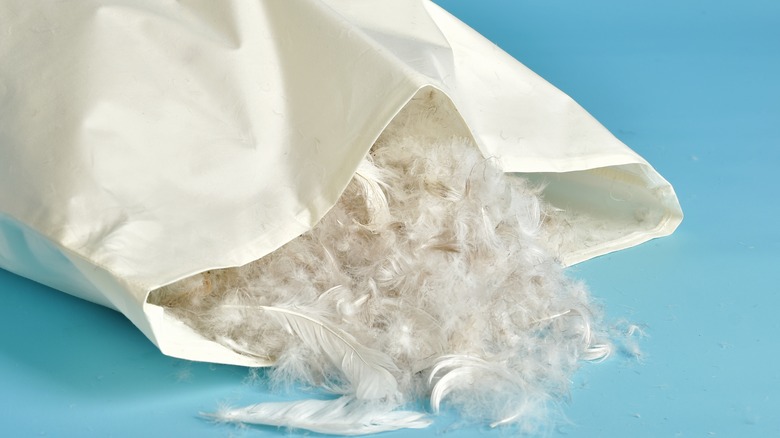How Often Should You Replace Your Pillows?
When you think of your pillow, the first thing that comes to mind might be a cozy night's sleep. While that is what should pop into your head, you may also want to consider how long that particular item has been cradling you as you dream. If the exact number of years isn't coming to mind immediately, it might be time to consider a replacement. Growing attached to your pillow is normal, but there are downsides to keeping one in rotation for too long. Subbing out the exact model for a new one, or upgrading to something better, could improve your sleep, help you feel more refreshed, and even diminish certain allergies or health issues.
Everyone likely has a different recommendation when it comes to how long you should keep your pillow. If you've had one for longer than 10 years, it could feel awkward even putting a number to the nights spent rolling, hugging, and fluffing yours. It's okay to quietly let your cozy companion go in favor of another, and no one has to be the wiser except your body. Updating this important piece of the bedroom will allow for a variety of benefits, including better alignment in the spine, according to Spine Align.
Every two years
So, how often should you be swapping out old faithful for a new model? According to The Guardian, new pillows should be purchased every two years at the most. While this may seem like a short amount of time between head cushions, this duration ensures that allergens are kept at bay, and that the support provided is strong enough for your back and neck's needs. As a pillow grows less supportive, your body can suffer from soreness or even misalignment. You might have to start putting more money towards replacements, but it could save you pricier doctor's bills in the future.
If you can feel bumps in your pillow, notice yellowing, or it feels saggy, these are all signs that it's time for a new one. You might feel like it can hang on a little longer, but remember that dust mites can become a problem with older pillows, wreaking havoc on allergies or asthma symptoms. According to WebMD, they feed off dead skin cells, which are likely plentiful on aging pillows. For this reason, getting rid of them before they can affect your skin or sinuses is the best option.
How to make the most of your pillow
Letting go of your favorite pillow might feel like a bigger loss than finishing a favorite Netflix series or dropping your ice cream right after you paid, but in the long run it will benefit your overall health. However, there are a few tips and tricks you can try to get the most out of your cushions before they have to go. In order to help keep dust mites at bay, stick with feather pillows, says the Asthma & Allergy Center. Their coverings can be better for battling dust mite migrations, as the fibers are woven more tightly than synthetic versions. You can also purchase hypoallergenic casings or dust mite covers, which both work to keep these pests from disrupting your sleep and daily routine.
Cleaning your pillow regularly gets rid of dirt, skin cells, and other detritus that accumulates over time. Sealy recommends throwing them in the washing machine every three to six months using the hot water setting to get them as clean as possible. Stick to milder detergents, then put them on another rinse cycle to make sure all the soap gets washed away. Once a week, place them in direct sunlight so they can air out and get rid of germs. This will also help keep odors and bad smells from sticking around on the covers and pillow itself.


